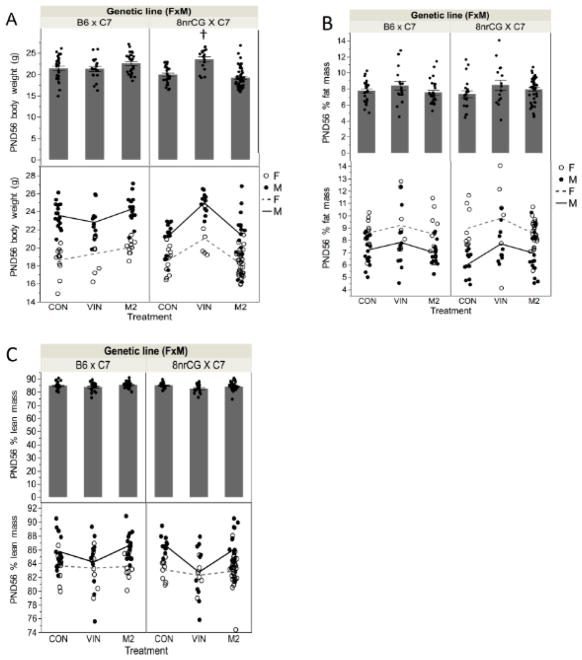Figure 3.
G1 body weight and body composition outcomes (Study 1). PND56 (A) body weight; (B) percent fat mass; (C) percent lean mass. Top panels show bar graph of average body weight for both sexes combined. Bottom panel is enlarged to only show portion y-axis covered by data points. Individual (dots) weights are separated by sex, male (filled dots), female (unfilled dots); lines connect means between groups for males (solid line) or females (dashed line)). Error bars indicate standard error of the mean (SEM). F, female; M, male. Treatment group(s) with a significant difference from CON is denoted by (†). Sample sizes for each treatment group are listed from left to right as shown in each graph (n=number of mice, both sexes combined; N=number of litters): PND56 bodyweight n= 28, 19, 26, 27, 17, 50; N= 5, 4, 5, 7,3, 7; PND56 % fat mass n= 28,19, 26, 20, 16, 43; N=5, 4, 5, 5, 3, 6; PND56 % lean mass n= 28, 19, 26, 20, 16, 43; N=5, 4, 5, 5, 3, 6.

